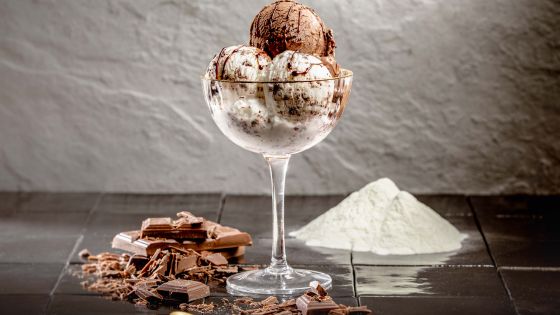
The European ice cream market: what are the trends and challenges?
The European ice cream market is a key segment of the global market for sweet snack products. However, this category faces many challenges related to the growing attention of consumers to the nutritional quality of their diet. While they must meet nutritional expectations, ice creams remain above all occasional pleasures and must retain their indulgent aspect and resulting attractiveness.
State of play of the European ice cream market
Some key figures [1]
In 2022, the European ice cream market accounted for 3.2 billion liters of ice cream produced, representing a growth of 5% compared to the previous year. More specifically, Germany is the leading producer with 620 million liters, followed by France, with 591 million liters, and Italy, with 571 million liters.
With regard to global trade, part of this production figure is destined for export to foreign markets. In 2022, European Union Member States exported 930 million euros worth of ice cream to non-EU countries. By contrast, ice cream imports amounted to 61 million kg, with an estimated value of €203 million.

What are consumers’ expectations? [2]
The European ice cream market is confronted with an important consumer demand: more naturalness. While the popularity of ice cream claims varies from region to region, “no additives/preservatives” stands out, demanded by 9.6% of consumers surveyed. The demand for transparency and shorter ingredient lists, which represent more cross-cutting trends, is also in line with this first expectation.
From a nutritional standpoint, consumers are becoming more health-conscious and are looking for ice cream options that align with their dietary goals. As a result, there has been an increase in the development of low-sugar, low-fat and high-protein ice creams.

What if it was possible to combine eating pleasure and nutrition?
Improved nutrition, but no compromise on taste
Ice creams are a source of eating pleasure that can easily be associated with an image of products that are too sugary or high in fat. The challenge for the European ice cream market therefore lies in finding a balance between traditional indulgence and improving nutritional profiles. Several avenues can thus be considered, including :
-
-
- Adjusting the amount of added sugar and/or fat, taking care not to alter the taste and texture of the product.
- Following the functional eating trend and enriching with essential nutrients such as protein or calcium. In order to meet consumer expectations, Lactalis Ingredients offers a wide range of high-quality proteins for nutritional and functional applications.
-
What is the role of lactose in the European ice cream market?
The figures speak for themselves: the problems related to lactose cannot be overlooked. In fact, about 70% of the world’s population have been estimated to be affected by lactose malabsorption.[3] This percentage varies from one region of the world to another: in Europe, it is around 35%. In addition, almost two-thirds of European consumers limit their lactose consumption in their diet for health and intolerance reasons. [4]

In response to this issue, the growth of lactose-free product launches has increased by about 8% per year since 2016. “Lactose-free” is a strong current market trend. With 72% of new launches in 2024, Europe has seized this exciting opportunity. By offering lactose-free skimmed milk powder, Lactalis Ingredients is also becoming a major player in this trend. This powder is compatible with lactose-free or lactose-reduced products. Being naturally slightly sweeter, it can help reduce the amount of sugar in the formulation. Last but not least, it makes no compromise on eating pleasure and offers a great natural dairy taste!
The European ice cream market is an example of the challenges faced and the required adaptation in the different food sectors. With more than 50 years of experience, Lactalis Ingredients is a key nutrition industry player striving to consistently meet the expectations of consumers in the best possible way.
Contact us for more information!
Sources:
[1] Eurostat, EU ice cream production grew by 5% in 2022, 14 august 2023 https://ec.europa.eu/eurostat/web/products-eurostat-news/w/ddn-20230814-1
[2] Innova Market Insights, Ice Cream Trends & Dairy Alternative Ice Cream Trends, 2023. https://www.innovamarketinsights.com/trends/ice-cream-trends/
[3] Li A, Zheng J, Han X, Yang S, Cheng S, Zhao J, Zhou W, Lu Y. Advances in Low-Lactose/Lactose-Free Dairy Products and Their Production. Foods. 2023 Jun 29;12(13):2553. doi: 10.3390/foods12132553. PMID: 37444291; PMCID: PMC10340681.
[4] https://insights.figlobal.com/innovation/latest-lactose-free-innovation














